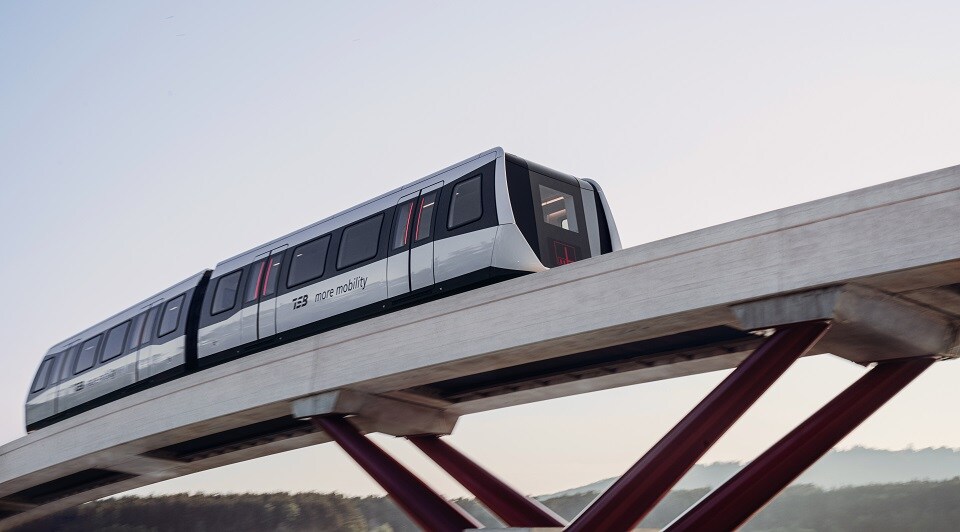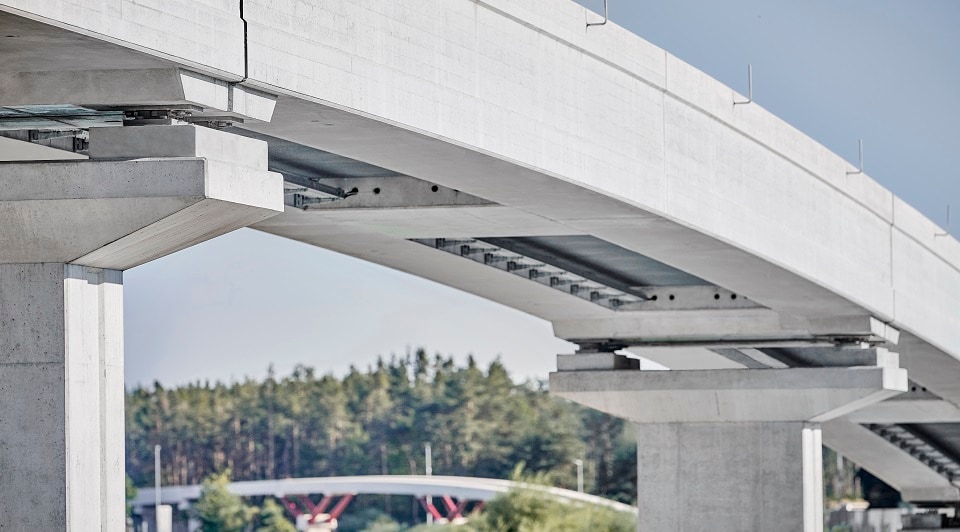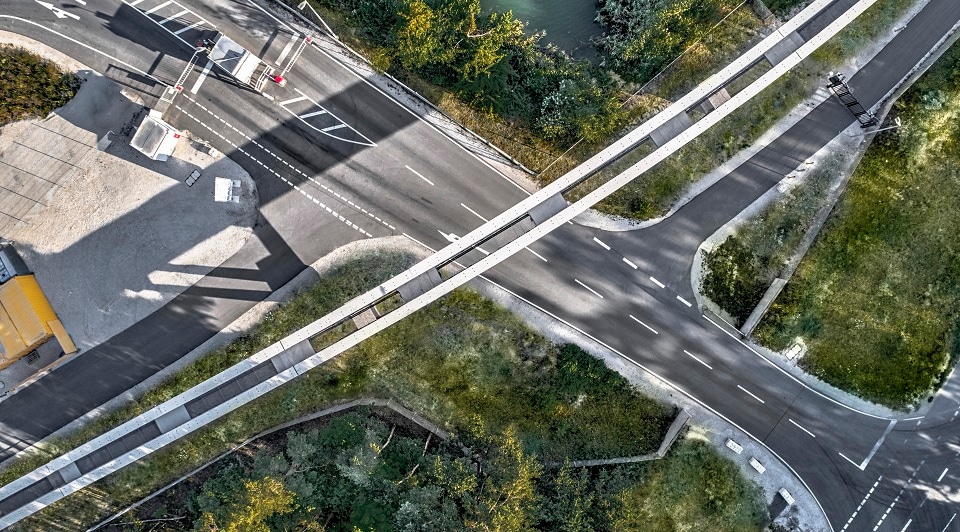Keyboard ALT + g to toggle grid overlay
Magnetic levitation powers safer, more efficient urban transportation
German construction and infrastructure company Max Bögl has literally taken magnetic levitation (maglev) technology to new heights—by flying a maglev train from Germany to China in one of the world’s largest cargo planes. The vehicle has been deployed on a demonstration track for the company’s fully integrated maglev train system in Sichuan, China. With additional feasibility studies underway in Europe, Max Bögl is proving that maglev is a sustainable, cost-effective urban mobility solution for local mass transit.
A vision for the future of mass transit
Drawing from its experience supplying the track for Transrapid Shanghai—a commercial high-speed maglev train line in operation since 2002—Max Bögl has designed a new, fully automated urban mobility solution: Transport System Bögl (TSB). While feasibility studies are currently being conducted in Europe, the system’s vehicles are already being demonstrated in China.
“We’re absolutely convinced that this maglev train will revolutionise the future of mass transit,” says Andreas Rau, product manager for the TSB. “We can now offer a more environmentally sustainable, cost-effective transport system as a complete track, vehicle and operating technology package.”

Maglev: a sustainable, integrated and adaptable technology
According to Max Bögl, there are several major differences between the TSB and the Transrapid maglev system. First, the TSB is a fully integrated package from a single source. Max Bögl aims to deliver customers a full-service solution, including everything from planning to vehicle manufacture, on-site assembly and system operation. And where the Transrapid focuses on speed, the TSB is designed for a more complex purpose: providing future-proof public transport for densely populated cities.
This means that despite being slower, with a speed of 150 km/h (95 mph), the TSB is quieter—emitting almost zero noise and no vibrations. The system is also flexible and can function across a multitude of urban landscapes. It can be installed as an elevated railway, at the ground level or even as an underground transportation system.
This adaptability is the result of some precise infrastructure design. TSB’s undercarriage engages the rail from the inside and is then pulled upward to a height of just over a quarter of an inch by the magnets. This allows the track to be very slim and ideal for urban areas, where space is limited.

The TSB’s sophisticated technology makes it both safer and more efficient. “It scores highly in comparison to conventional transport systems,” Rau says. The combination of automated, driverless operation without human error and the advantages of magnetic-levitation technology reduces running costs by 20% in comparison to conventional wheel-rail systems. “The TSB can be scheduled to run on-demand, which avoids empty journeys in off-peak hours and in rural areas,” Rau says.
Trains can also run practically wear-free, making them even more cost effective. In contrast to the wheels and rails of a tram, for example, the track and the undercarriage have no contact on the TSB. There’s also no contact between the stator and the elements, as the TSB employs a short stator in the vehicle, instead of a long stator on the track.
Visualising radical new ideas with 3D models
The TSB might sound like the ideal solution, but realising such a radical change within the transportation industry always takes a little convincing.
Max Bögl relies on 3D models to draw potential customers to the new technology. “Visual representations are very important in the project development phase,” Rau says. Max Bögl uses Autodesk solutions such as InfraWorks (US site), Civil 3D, Navisworks and Inventor to produce 3D visualisations of the TSB for each area of the project.
“In order to provide a realistic representation of what the track will look like for a particular route, we use Autodesk software and a selection of camera tracking shots with tight curve radii of up to almost 150 feet, as well as steep gradients of up to 10%,” Rau says. And in collaboration with Autodesk Consulting, Max Bögl’s engineers were able to improve their work-process efficiency by using 3D visualisations instead of 2D drawings.

Building the first demonstration track
The next step for Max Bögl is to bring the TSB concept to life. To convince local customers of the system’s power on site in China, the German company and its Chinese partner Chengdu Xinzhu Road & Bridge Machinery Co. have built a 2.17-mile demonstration track in the southwestern Chinese province of Sichuan, where the TSB can reach speeds of almost 100 mph.
The heavy track segments are almost 40 feet long and made from precast concrete elements that are manufactured in series production at Max Bögl’s German headquarters, which also manufactures the vehicle. The track segments were placed in containers and transported to China by rail via the New Silk Road and the vehicle was delivered to the Chinese demonstration track by air, where it's now in full operation.

Meanwhile, the Federal Ministry of Transport and Digital Infrastructure (BMVI) in Germany is conducting a feasibility study into using the TSB at Munich Airport. This provides a potential basis for deployment throughout Germany: Discussions are already underway for projects in Berlin, the northernmost state of Schleswig-Holstein and the greater Munich area. The future of magnetic levitation trains in Germany will be revealed when the results of the studies are delivered in early 2021.